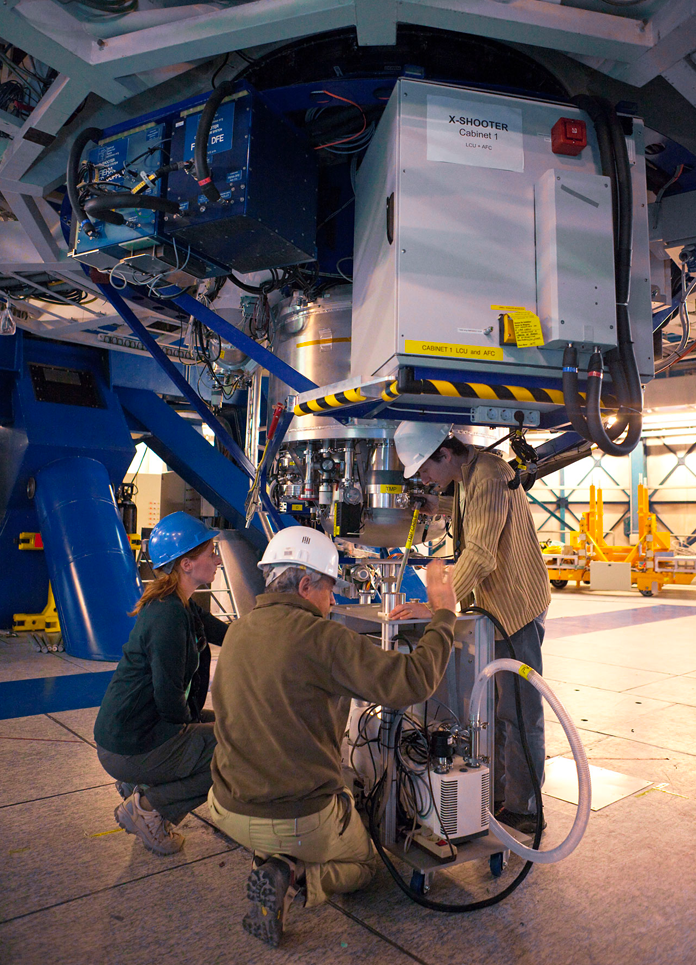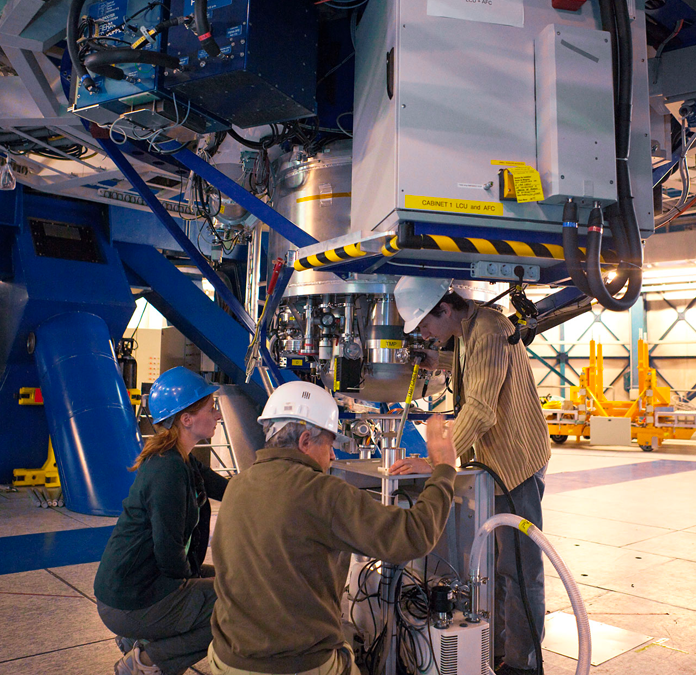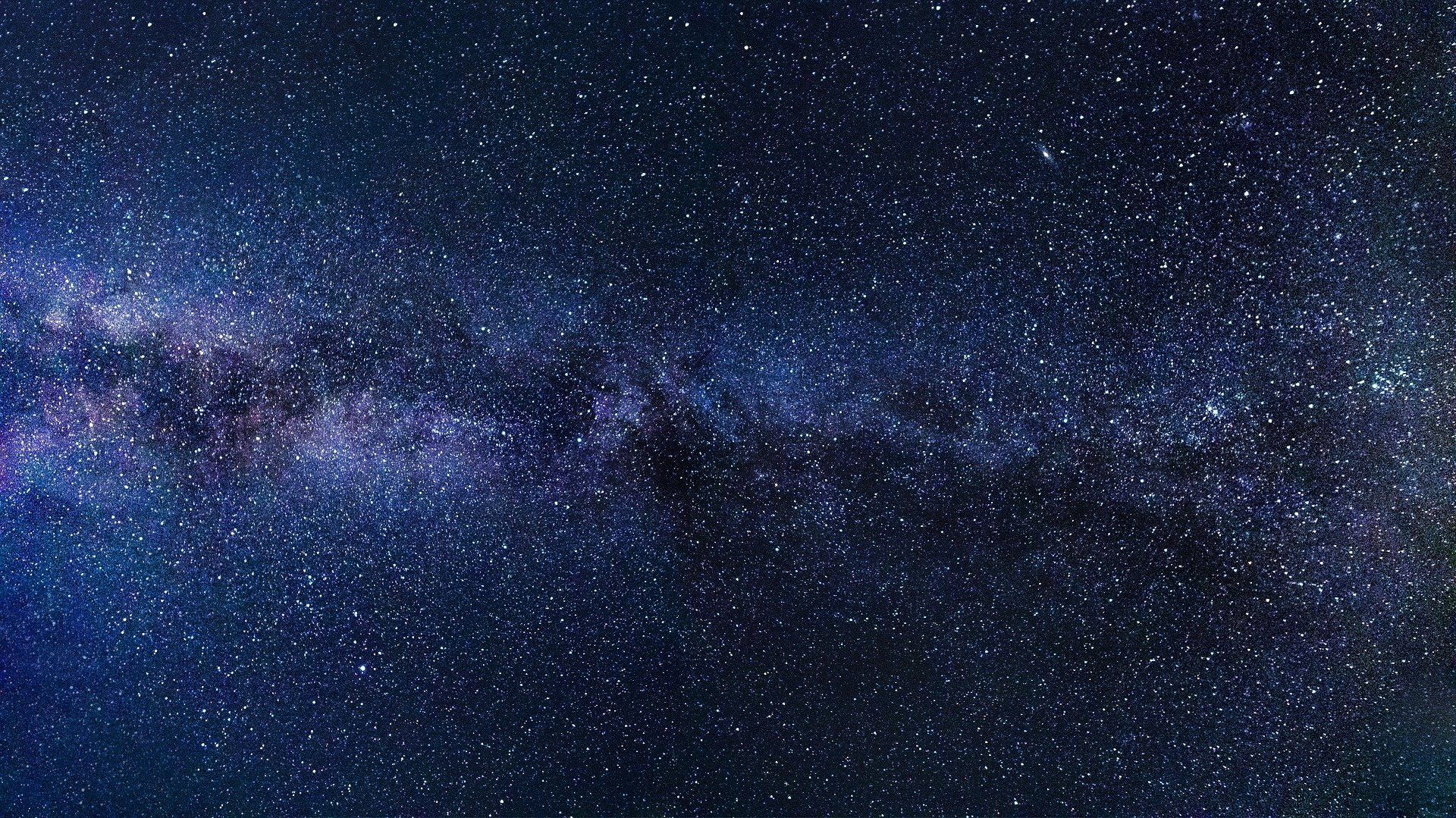News from the collaboration
June 17, 2023: The black hole masses and accretion rate computed for the extended XQR-30 sample has been published in the paper “XQR-30: Black hole masses and accretion rates of 42 z ≳ 6 quasars” led by Chiara Mazzucchelli, accepted in Astronomy & Astrophysics.
March 28, 2023: The paper “New quasar proximity zone size measurements at z ~ 6 using the enlarged XQR-30 sample” has been accepted for publication in MNRAS. This work is led by Sindhu Satyavolu, a PhD student at the Tata Institute of Fundamental Research, India. Read more…
March 18, 2023: A new XQR-30 paper “The fraction and kinematics of broad absorption line quasars across cosmic time” has been accepted for publication in the Astrophysical Journal. This work, led by Manuela Bischetti (Università degli Studi di Trieste, IT), aims to investigate the cosmic evolution of the occurrence and kinematics of outflows driven by supermassive black holes (BHs), as traced by C IV broad absorption line (BAL) features in the quasar spectra. Read more…
March 8, 2023: In a new paper published in MNRAS, we present evidence for rapid evolution in the CIV content of the early Universe which may be linked to hydrogen reionization. The work is lead by Postdoc researcher Rebecca Davies, working at Swinburne University of Technology in Australia. Read more…
November 28, 2022: Public release of the XQR-30 metal absorber catalog! Read more…
April 6, 2022: Huanqing Chen, a PhD student at the University of Chicago, is leading the work “Measuring the Density Fields around Bright Quasars at z~6 with XQR-30 Spectra”, which has been just accepted for publication in the Astrophysical Journal. Read more…
April 5, 2022: The paper “Chemical Abundance of z~6 Quasar Broad-Line Regions in the XQR-30 Sample” has been accepted for publication in MNRAS. This work is led by PhD student, Samuel Lai, working with Dr. Fuyan Bian and Dr. Chiara Mazzucchelli of European Southern Observatory, as well as Prof. Christian Wolf and Dr. Christopher Onken at Australian National University. Read more…
March 9, 2022: XSHOOTER observations of the XQR-30 Large Programme have been completed! Read more…
March 3, 2022: Discovery of strong black-hole outflows suppressing black-hole growth in quasars at redshifts 5.8-6.6, based on XQR-30 quasar spectra. Results have been published in Nature 605, 244–247 (2022). This work is led by Postdoc researcher Manuela Bischetti, working at INAF Observatory of Trieste. Read more…
September 14, 2021: The first paper based on the XQR-30 quasar spectra has been accepted for publication in the Astrophysical Journal. Read more…

XQR-30
in a nutshell

The “Ultimate XSHOOTER legacy survey of quasars at z ~ 5.8 − 6.6″ (XQR-30) is a spectroscopic survey in the optical and near-infrared wavelength range of the brightest, highest redshift quasars observable from the Southern hemisphere to study the Universe in its infancy, when it was just one Giga-year old (109 years).

